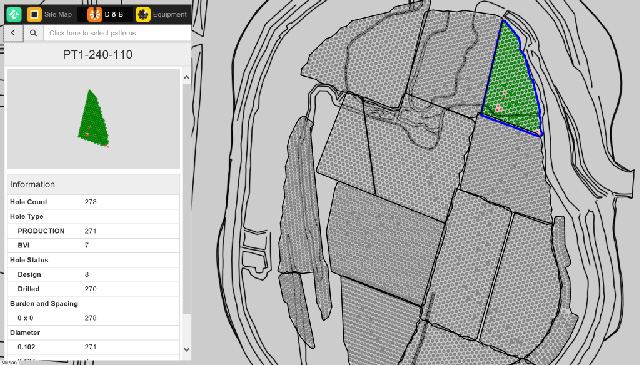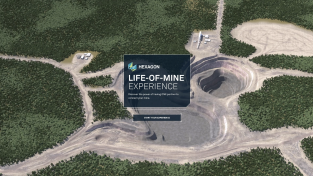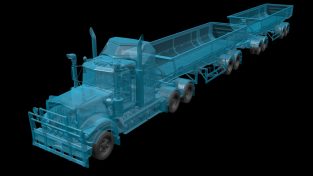Mobile apps are transforming the mining industry with real-time solutions that are integral to a digital mine. Hexagon Mining’s Rob Daw, discusses the implications.
BK: Welcome back to HxGN RADIO. My name is Brian, thanks for joining us today. We will learn more about the history of how MiPlan started and the direction Hexagon Mining will take MiPlan and the coming years. Here today with Rob Daw, the director of business development at Hexagon Mining. In today’s episode, we will be talking about mobile mining apps.
Rob, thanks for joining us.
RD: Thanks for having me.
BK: Appreciate it.
So, you’re one of the creators of MiPlan, and this was acquired by Hexagon for its mobile technology, so tell me about the history and what problem you were trying to solve, all that. Let’s hear all about it.
RD: I guess about seven years ago, we came up with the idea of MiPlan. And what it came down to was meeting customers’ needs for data reporting and gaining insights into all of that information in MineSight. Traditionally in mines, or in any business, there’s a lot of information and data floating around, and we wanted to be able to transform that into some actual packets of information for them and really work on the business improvement pace with those guys.
BK: Understood, excellent.
Tell me about some of the components of the solution.
RD: We break down the solution to three core areas of what we do. So we have the visualisation, and that is both a GIS aspect, so understanding where your equipment is at any given point in time and what it’s doing, who’s operating it, how effectively it’s operating. Within that area as well, we also have all the reporting capabilities; so full access, open book into all your data and all your needs in an operations point of view.
The second then is in management. So it’s one thing to report data and regurgitate all this data coming out, but to turn that data into actionable packets of information and process that information was really a key component. So taking data sources from other fleet management systems, or your HR system, and then starting to process that for the mining operations into stockpile management, end-of-month reconciliation paces, that really started to assist in the day-to-day operations of that mine.
And then moving through that world, we kind of started to develop applications for out in the field for data acquisition. And that’s the third component of what we do. And so firstly, it was looking at the field, it was QA/QC, sampling, a few other areas. And then just naturally, through natural progression of the solution, we moved into a lightened fleet management solution there as well. So now we’ve kind of got that full width and breadth of collection through to reporting.
BK: Yeah. Nice, excellent. So how does MiPlan tie into products like MineSight, Jigsaw, that kind of thing.
RD: On the MineSight component, they’ve got a really neat drill and blast package. And so they can do all of the design information, but then when it comes to the actuals and collecting that information in the field? That’s where we can come in. So all the QA/QC, dipping holes, tracking the explosives usage and compliance to plan, which is then that reconciliation space. We tie really well with those products, along with the dig blocks from the geological site as well.
And then on the Jigsaw … So I guess you’ve got open-pit and underground fleet management systems within the Hexagon Mining space already. And then combine that with the collision avoidance solution … the MiPlan platform is able to sit over all those three products, and start to bring that information together. And we can start to see the insights between all those different operation types, it allows us to do benchmarking, it allows you to get insights into your operation, a whole heap of areas for improvement.
BK: Excellent. So I know replacing paper at a mine with tablets is a great idea, but explain why this is so important and why it’s going to improve the workflow.
RD: So the big thing with paper-based solutions is it takes time and there’s errors. It’s riddled with errors in terms of someone’s capturing that information, someone’s then entering that information, before someone can even analyse it. So by introducing those tablets, we’re really streamlining that whole process and giving people the opportunity to analyse the data instead of be a data entry person, I guess. And that whole workflow then just speeds up. In any business, time is money, and improvements on efficiencies we can gain there is valuable.
BK: Yeah. Every minute there is quite a lot of money, actually you know, so that’s a great thing, great solution. Now how important is it to get to real-time data to people you know, on a site, on a mine?
RD: It dovetails in, I guess in terms of replacing the paper and having the right information at the right time is the critical component to making the right decision. And we’re talking millions of dollars in terms of decisions that people are making on a mine site every day. So if we can assist those guys in any way shape or form, than there’s a lot of time and money saved by that operation.
BK: What sort of problems can it prevent by having that real-time data vs. something that might take some time. Are there problems that that solves?
RD: I don’t think the problems are ever going to go away, we’re still going to have the same problems, but what it allows you to be is proactive instead of reactive to those problems. You can get out ahead of the game and hopefully it should never be the factor of we could have, we should have. It should be this is why we did it. And justification, and having that information helps that.
BK: Good, good. Now is there a specific type of mine that would benefit most from a mobile solution or … I’m assuming they all benefit, but is there something that would benefit more?
RD: It really scales across all of them. So you’ve got quarries on the smaller side of things all the way through to the super pits. Everyone is connected together within some way, shape or form; through social media or anything else, and mining operations should be no different in that space. No matter what size they are, they really will benefit on those types of solutions.
BK: Okay, so all across the board make it happen.
RD: That’s it.
BK: I like that.
So what are some specific examples that you’ve seen, result wise, from clients that have used MiPlan solutions?
RD: A couple of key ones there. We rolled out our drill and blast solution to a client, and the typical process that they had there was up to four days from the time of a drill hole being drilled to the time they got the information back into the office was over four days. There’s massive benefits to streamlining that process. One we’d implemented our system in there, they were getting real-time information on that. So the engineer, all of a sudden, was freed up to actually start to do business improvement and improve the blast process, which improved the fragmentation, saved them a bunch of money on the amount of explosives and everything else they needed in that operation.
The other one then is also at Whitehaven. The guys over there have rolled out the fleet management system. Just getting greater gains or access to their data, they’re starting to understand their efficiencies, how they can improve, put in business improvement projects … and their supervisors as well are enabled out in the field with the tablet, they’re starting to see what their decisions are affecting them in real time.
BK: Excellent. It sounds like results come quickly, right after implementation, which is great.
RD: Well, even traditionally before we finished the implementation, the guys are starting to see the improvement scenarios, or at least identify areas for improvement straight off the bat. So we can really start to work with their clients and streamlining that as well.
BK: Excellent. So you know, a mine is getting ready to implement MiPlan; what does that look like, that process?
RD: Typically, what we do is work with the client. We go to the site, we work through what their requirements are in terms of their fleet size, what sort of infrastructure they’ve got from communications systems, from IT systems. And out of that we can then present a plan. And essentially, it’s a pretty basic project plan for them. We then start to work with the client in terms of implementation, and we transfer our knowledge as much as possible to the client. And it really is a self-sustaining solution for them to be able to manage and maintain, and evolve the system for their needs going forward as well.
BK: Excellent, great stuff. I’m really, really impressed by this. So what are you looking at over the next couple of years? Where’s MiPlan going?
RD: Can’t give too much away.
BK: Of course you can’t, nope. So what can you give us?
RD: The solutions we’ve got from within Hexagon Mining are really to cover a massive width and breadth with the mining value chain, so where we can start to really add a lot more value is the tighter integrations that we can have with those solutions. And that’s happening really quite rapidly, in terms of those, as we’ve got a mobile platform that’s really quite flexible and agile so there’s probably a guarantee that there’ll be more applications and more needs from the mining people out there. So we’ll just have to keep an ear out for what they’re chasing as well.
BK: Yeah, excellent. Well you’ve been solving a lot of problems and doing some great work. Great to hear, congratulations on all of this, and thank you very much for sharing all of this information and being on the show today.
RD: Not a problem, thanks very much for having me.
BK: Absolutely. And you can get more information on MiPlan over at HexagonMining.com, do check it out.
Rob, thank you again.
Be sure to tune in to more episodes on HxGNRADIO.com or iTunes, SoundCloud, or Stitcher Radio. Thanks for listening, have a great day.

















